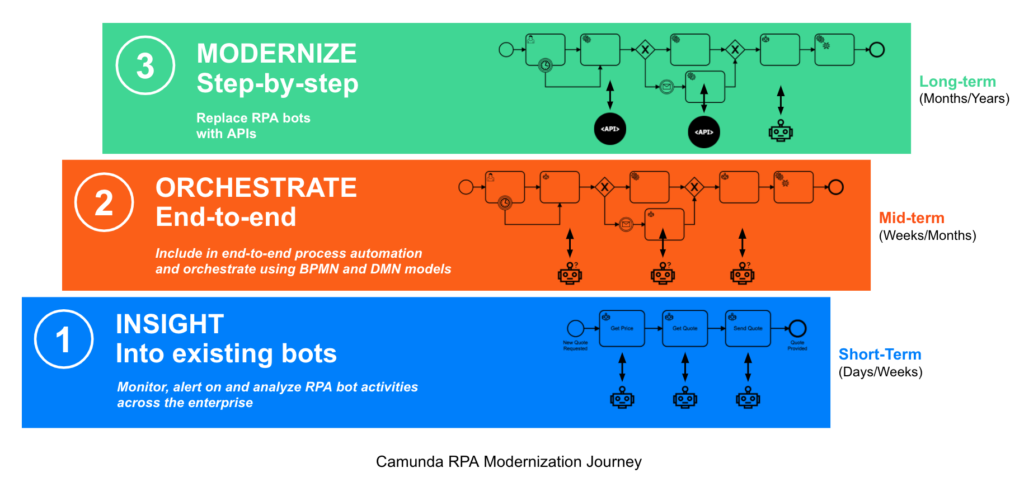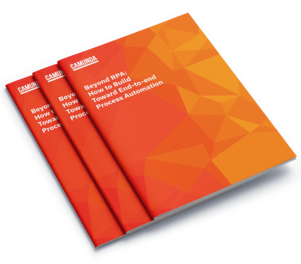Robotic Process Automation has come of age, with Forrester Research predicting the RPA market revenue is on target to reach $2.9 billion this year.
It’s not hard to see why this market is maturing fast, with RPA promising an easy and quick fix to automate many of the manual, repetitive tasks that require manual data input or an exchange of data with an inflexible legacy system. RPA bots can be deployed quickly and deliver an immediate productivity boost, not to mention significant cost savings.
But with so many tools available on the market — you can find everything from vendors promoting low-code solutions to code-heavy approaches, all marketed under the RPA banner — it’s becoming imperative to differentiate RPA from Process Automation (sometimes known as workflow automation), which perform very different functions. When it comes to automating business processes end-to-end, you are looking at a set of different problems that require a diverse set of tools.
In the wider automation picture, RPA plays an important role to automate parts of a business process. Other parts may still be completed by humans, (micro-)services, IoT devices, or AI/ML components etc. Thus RPA products and end-to-end process automation products like Camunda are complimentary. You can combine them by letting Camunda orchestrate RPA bots together with other parts of a business process.
Mitigating Technical Debt
Understanding the ways that organizations risk accumulating technical debt with RPA is critical to establishing a strategy for long-term success. RPA is essentially reading and automating the same interface that a user would use. It makes for a brittle and maintenance-intensive technology. Any changes to the environment – from a Windows update to a routine password change – could break the bot behind the process.
Ultimately, an over-reliance on RPA bots may stop organizations short on their path toward becoming a digital enterprise because they automate siloed tasks and not the full business process. Most organizations run hundreds of different applications that contribute toward their core business processes, but with RPA, a core step in the process may operate in isolation. This leads to a lack of visibility and loss of control of the end-to-end process.
The following 3-step framework provides a practical approach to get started:

1) As a first step, start to centrally monitor your bots, which will provide the visibility across all your activities and allow you to detect breaks and analyze effectiveness. By starting this way, you avoid any disruption for existing bots or processes and if you are implementing this with a process automation platform that can orchestrate bots, you are building the right foundation for the future at the same time.
2) Next, utilize the process automation platform to orchestrate the full business process including all RPA bots; this is critical to getting on a path of RPA modernization as the role of each RPA bot is now defined and managed as part of the actual, end-to-end process.
3) Finally, you can now take advantage of the process orchestration infrastructure you have created in the prior step, to develop a long-term strategy to gradually retire selected RPA bots and replace them with (micro-)services that are accessible via API – all without changing the underlying process.
Build Toward End-to-end Process Automation
RPA can be a very useful part of your digital transformation tool kit. But bear in mind that it does not solve the underlying issues with your tech stack. RPA is a tactical solution to automate individual tasks. It is by design not suitable to automate core business processes. Instead, it can be a very useful stepping stone as part of your strategic journey toward a modern IT infrastructure. Moving towards orchestrating your RPA bots as an integral part of your end-to-end business process will be a critical step to get to a more effective, robust and scalable automation infrastructure.
If you’d like deeper insights, we’ve researched the benefits and pitfalls of RPA, alongside best practice implementations to take you well into the future. Beyond RPA: How to Build Toward End-to-end Process Automation is now available to download for free.


